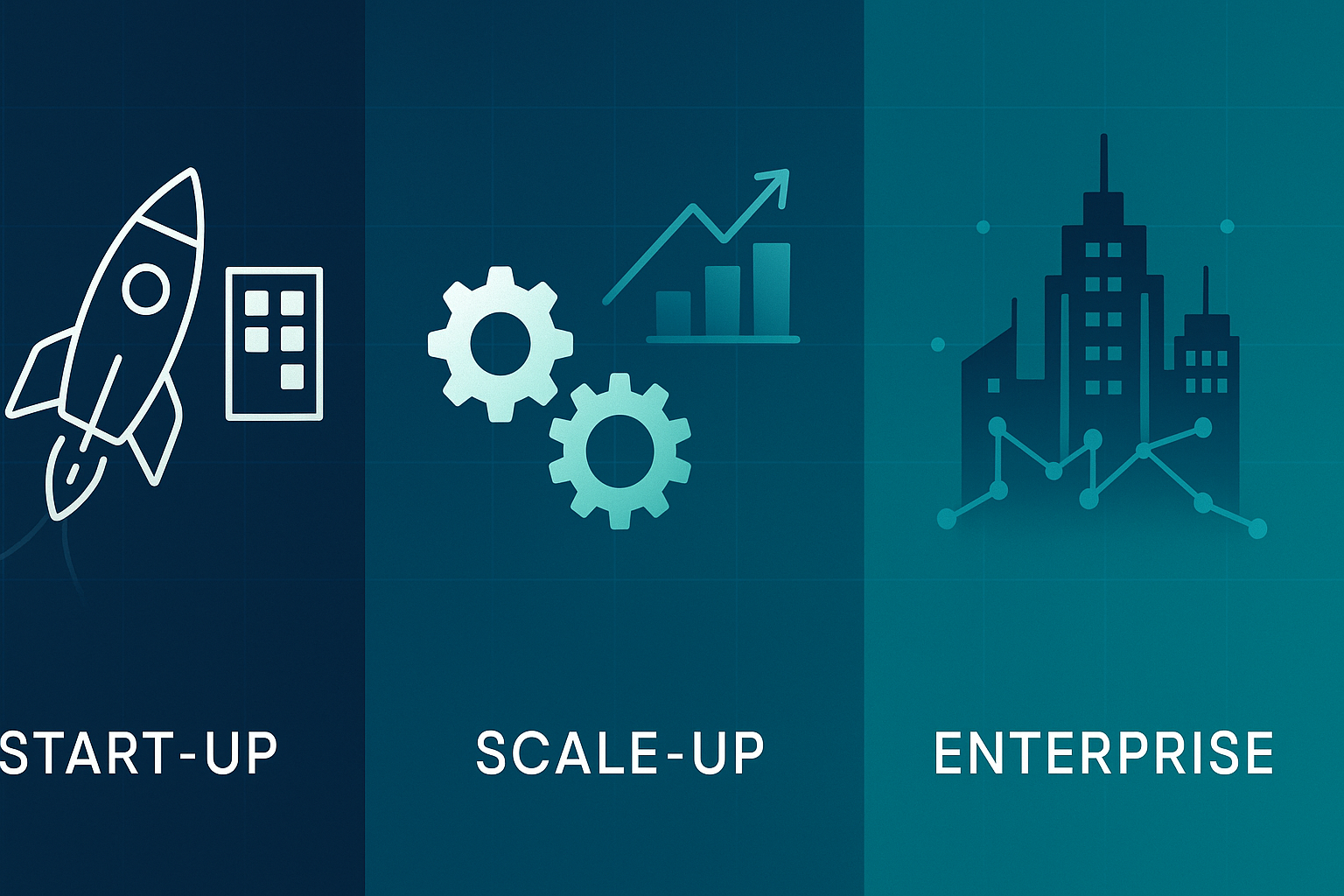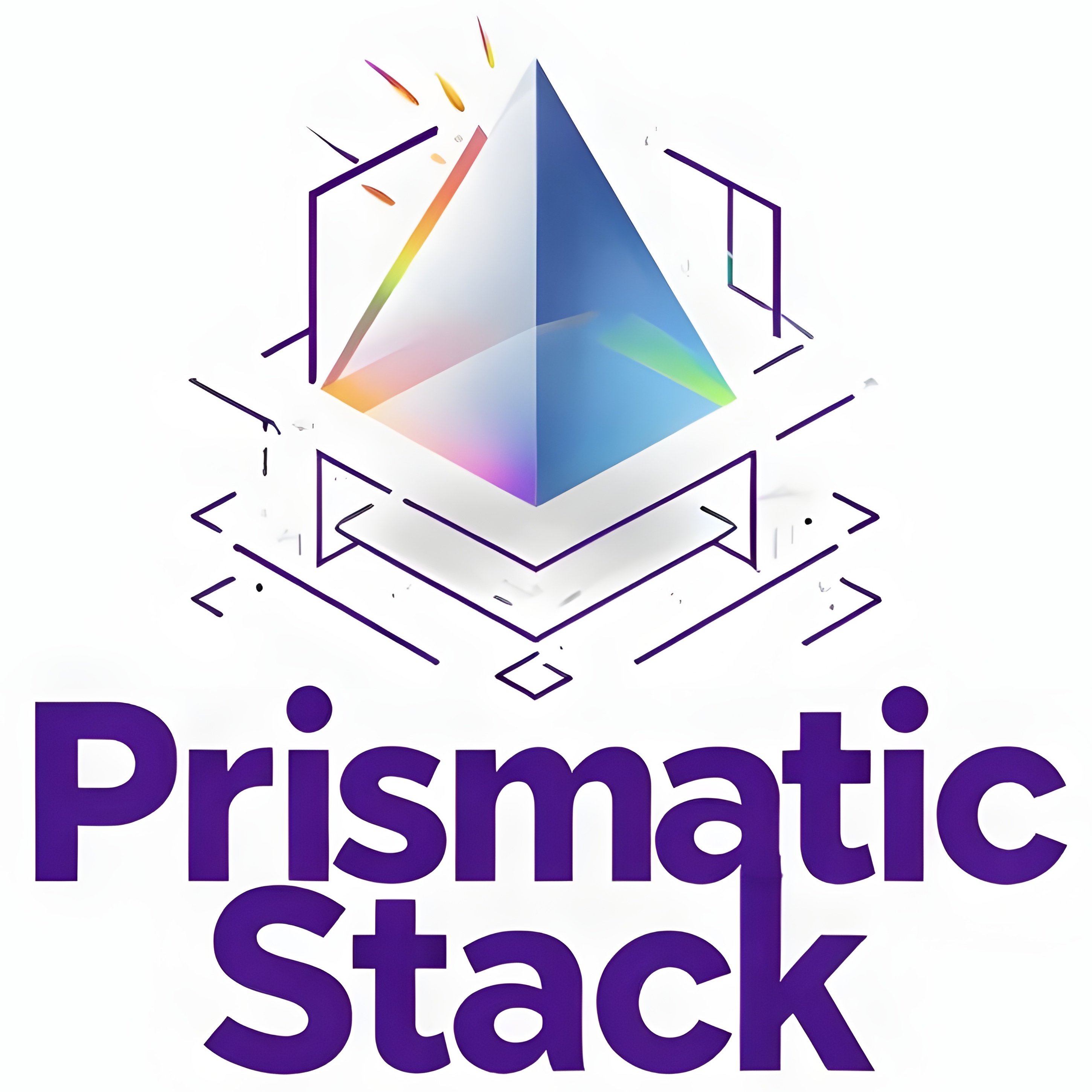Right Fit, Right Stage: What Great Product Management Looks Like in Start-ups, Scale-ups & Enterprises

TL;DR
- Context drives craft. Ship scrappy in 0-1, systematise in 1-N, politic (unfortunately) in N+.
- Cadence drives clarity. The same Review & Prioritisation flywheel keeps every stage aligned.
- Universal habits Clarity, cadence, data, empathy, outcomes - all turn PMs into force-multipliers.
Three Monday Mornings. Three Realities.
- 07:55 — a five-person start-up
A new v0 prototype on one monitor, Amplitude dashboards on another. Founder asks whether today's experiment will nudge activation before tomorrow's investor call. - 09:02 — a 120-person scale-up
Slack is melting with feature requests (all labelled urgent by Sales), bug tracking suggests a Meta API deprecation, Growth wants 'one-click ad' yesterday. - 09:30 — quarterly business review at a global enterprise
Emails, decks, pre-reads, meetings-about-meetings. Sign-off cycles that delay impact.
Product Management... Same craft, wildly different terrains. After tours of duty in all three, I've learned that great PMs adjust what they do daily yet keep the same operating rhythm that keeps everyone moving...
Context Changes the Craft
Misapply a heavyweight process at seed stage and you'll suffocate velocity; wing it in a listed company and you'll burn trust faster than cash...
| Stage | Feedback Loops | Main Constraint | Success Currency |
|---|---|---|---|
| Start-up (0 → 1) | Minutes → Days | Runway | Momentum |
| Scale-up (1 → N) | Days → Weeks | Alignment debt | Throughput |
| Enterprise (N+) | Weeks → Quarters | Politics & inertia | Risk-adjusted ROI |
Start-up (0 → 1) — The High-Agency Generalist
- Ruthless prioritisation. Every backlog item competes with runway and available resources.
- Hands-on experimentation. Vibe coded prototype, Zapier/n8n automations, custom GPT's, fake-doors within the product... whatever ships!
- Narrative storytelling. The roadmap doubles as recruiting/sales pitches but isn't expected to survive reality.
We had three weeks to stand up a AI video creation platform MVP. I prototyped with the Cursor IDE, onboarded a designer with an accelerated design critique process, used Gradio to optimise workflows and system prompts, and combined user research with the go-to-market strategy 1st phase. Momentum > perfection.
- Chasing "robust & scalable" before you have ten sticky users. Over-engineering feels productive, but it defers the only metric that matters: insight per day.
- "Good-enough" data is fine - ignoring data isn't. Your 'leap-of-faith' assumptions might feel true, but you must still (aim to) validate.
- Building without explicit founder/investor buy-in on the highest-stakes hypotheses. When the narrative moves, so does the product.
Scale-up (1 → N) — The Process Builder
- Lightweight rituals. OKRs, weekly metrics review, design crits... (also important within start-ups but not necessarily immediately)
- Guard-rails, not brake-pads – crisp 'definition of ready/done', time-boxed spikes, metered funding – constraints that protect quality without strangling velocity.
- Delegation without dilution – razor-sharp decision boundaries and single owners so squads ship without permission slips
We went from 0-$20M in year 1 via Meta ads and lots of landing page experimentation. Experiments printed ROI but hijacked engineering from the subscription roadmap. Adding resources to forecast and write PRD's enhanced long-term perspectives and cut merge time on core features by 60%.
- Bureaucracy creeps in silently; measure cycle time as religiously as revenue and audit rituals quarterly.
- New middle managers need coaching or process calcifies.
Enterprise (N+) — The Diplomat & Influencer
- Stakeholder pre-alignment – Map the incentives of those that can block you, get quiet thumbs-up before any deck hits a boardroom.
- Opportunity-cost accounting – Pitch features in risk-adjusted NPV and 'cost of delay' terms; cool is not a currency.
- Proxy metrics – User feedback arrives in quarters; wire Impact Maps and leading indicators so momentum stays visible.
- Pod/squad operations – Small ring-fenced teams can prove new ways of working without impacting everybody.
A note: At MediaCom there were dozens of approvers across brand, legal, and compliance. A one-page 'cost-of-delay heat-map' turned indifference into urgency, won pod-level autonomy, and helped eliminate buy-approval cycles in one quarter.
- Alignment theatre – meetings multiply, decisions evaporate. Counter with clear agendas, pre-read memos and written sign-offs that expire after 10 days.
- Big bang bias – We can't launch until it's perfect enables disruptors; ship thin slices and broadcast wins. Small releases are proof agile can breathe in a waterfall sea.
The Operating Rhythm That Scales Everywhere
Great PMs flex the craft but keep the same Review & Prioritisation Flywheel humming underneath, no matter the stage.
- Current State
Key metrics, major risks, resource status - Decisions Needed
Specific asks, trade-offs, dependencies - Deep Dive
Evidence, options, recommendation
Executives jump straight to Decisions, peers dig into the Deep Dive, and you prove you've done the homework.
you don't need all the answers—just clear decision paths, risk visibility, and next-step clarity. Scoping comes after broad alignment; that's where you earn your coin. My suggestion? Prioritise collaboratively every 6 weeks; I love the weighted scoring model approach.
| When | Action |
|---|---|
| 48h before Prioritisation | • Send critical metrics to attendees • Ask for top concerns • Surface potential conflicts |
| Prioritisation Meeting day | 60-90 min session mirrors Current State → Decisions → Deep Dive. |
| 24h after Prioritisation | Circulate written outcomes, owners and due dates. |
Universal Traits of Great PMs:
It boils down to five evergreen skills:
- Context → Clarity
– great PMs frame why before what. - Cadence
– quick decision loops beat perfect plans. - Data-fluency
– opinions welcome, data decides. - Destroy politics
– debate ideas, not egos. - Outcome obsession
– convert roadmaps into strategy ladders with hypotheses to be tested. Great PMs don't let stakeholders get high off of roadmaps.
The Review & Prioritisation Flywheel forces you to practice every one of these skills in public, every six weeks.
Next steps:
Get help creating your own review and prioritisation flywheels
I help founders and product leaders shorten feedback loops, install data-driven rituals and ship what actually moves the needle.
- 👉 Book a free 30-minute chat
Written by Alexander Chrisostomou • Published 22/05/2025 • Last updated 22/05/2025
